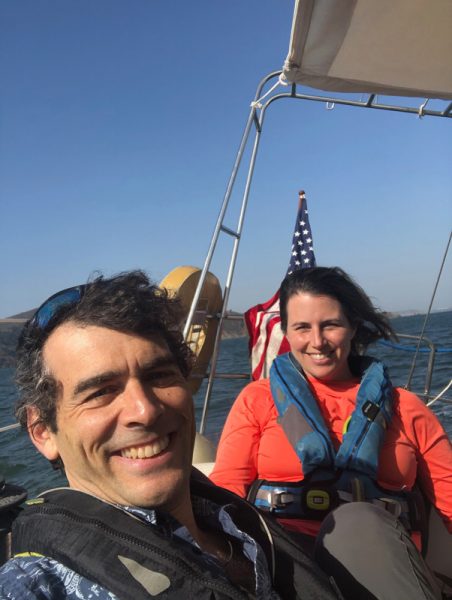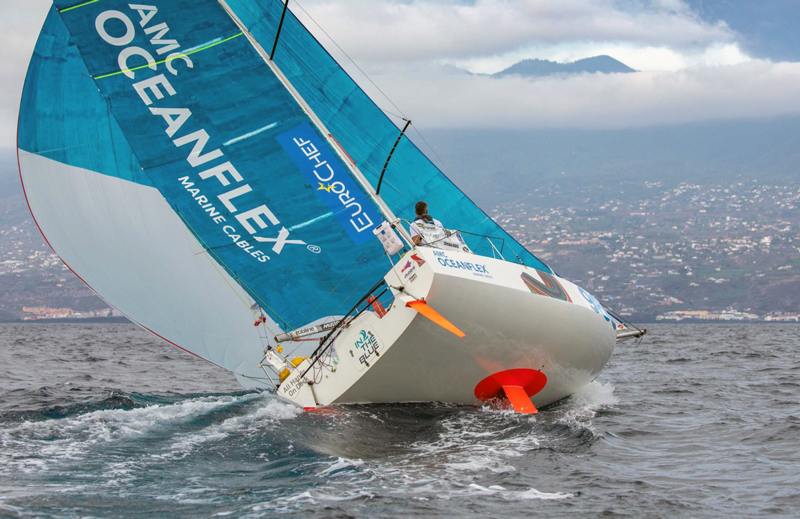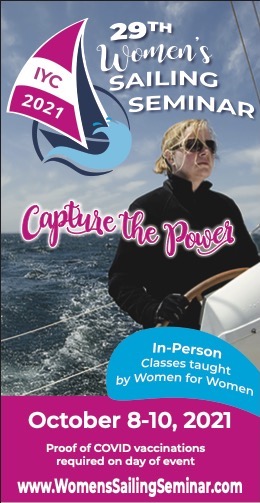
Boaters in Orange County Warned About Hazardous Effects of Oil Spill
Boaters in Southern California’s Orange County have been warned about the hazardous effects of the recent oil spill that occurred on October 1, 2021, due to a ruptured pipeline. In a public notice issued by California State Parks and California Coastal Commission’s Boating Clean and Green Program, mariners are warned against coming into contact with the oil in any way whatsoever. The oil is classified as a hazardous substance and can cause a variety of symptoms, including skin irritation.
The warning goes so far as to advise boat owners against cleaning their boats themselves, or cleaning them in an area “that has not been identified by the response as an official vessel decontamination site.” The notice advises that if your boat has come into contact with any oil, or for any other claims, you should call 1 (866) 985-8366.
And if you see oiled wildlife, do not touch the animal. Report your observations to the Oiled Wildlife Care Network on 1 (877) 823-6926.

The most recent update from Southern California Spill Response advises that as of 7:30 a.m. Friday, the following progress has been made:
- More than 900 people are conducting response operations
- To date, 5,544 total gallons of crude oil have been recovered by vessel
- 13 barrels of tar balls were recovered yesterday
- Approximately 172,500 lbs of oily debris have been recovered from shorelines
- Shorelines continue to be surveyed and cleaned
- Four overflights were conducted on Thursday and five are scheduled for Friday
- 14,060 feet of containment boom have been deployed
- For the latest wildlife information visit https://owcn.vetmed.ucdavis.edu/pipeline-p00547-incident
In Orange County, the public can expect to see Shoreline Cleanup Assessment Teams and work crews equipped with protective gear monitoring, inspecting, and cleaning the beaches to ensure that appropriate cleanup actions are taken. For your safety, the public is advised to avoid any contact with visible oil on the beaches.
Assessment teams are checking the following locations in San Diego County for any visible signs of oil:
- North Team: Santa Margarita River
- Harbor Beach/Oceanside City Beach
- Agua Hedionda Lagoon
- Del Mar Fairgrounds/San Dieguito Lagoon
- Los Penasquitos Lagoon
- La Jolla Shores/Scripps
A USCG press release issued late on Thursday states that the oil spill has been designated as a Major Marine Casualty.
Marine casualties are categorized based on their severity to include reportable marine casualties as the lowest level of severity, serious marine incidents as the next level, and major marine casualties as the highest level. A Major Marine Casualty is a marine casualty involving a vessel that results in one or more of the following:
- The loss of six or more lives.
- The loss of a mechanically propelled vessel of 100 or more gross tons.
- Property damage initially estimated as $500,000 or more.
- Serious threat, as determined by the Commandant and concurred with by the NTSB chairman, to life, property, or the environment by hazardous materials.
The joint investigation is being led by the Coast Guard, with assistance from the National Transportation Safety Board (NTSB), Bureau of Safety and Environmental Enforcement (BSEE) and the Pipeline and Hazardous Materials Safety Administration (PHMSA).
Below is a courtesy video, published by the USCG District 11, showing the pipeline as it was being examined on October 7 by the Coast Guard and partner agencies.
“Vessel owners impacted by the oil spill can file a claim by calling 1-866-985-8366. If your vessel has been impacted by the oil spill, we want to remind people not to clean their own boats, and to not use soaps or dispersants. If you spot oil, please contact [email protected].”
For further updates and information about the oil, please go to www.socalspillresponse.com.
Out The Gate Podcast Sails South to Catalina Island
Whales knew it long before the rest of us. Pods are cool. Beyond pods is podcasting, and Ben Shaw’s Out The Gate podcast helped inspire the recent launch of our own Good Jibes podcast. Going from inspiration to tangible result took the spark of Southern California sailor and Latitude 38 ally Ryan Foland — a lifelong sailor who grew up as a member of the Blue Water Cruising Club out of Big Geiger Cove on Catalina Island.

Ben Shaw recently interviewed Ryan Foland on his terrific Out The Gate podcast, where we learned some more about Ryan and the simple, SoCal pleasures of summers spent at Catalina messing about in boats, particularly his Laser, Sandy Bottom. Of his summers in Big Geiger Cove, Ryan says, “It’s a moment in time that I live for!” But now, a bigger boat and more sailing miles continue to lure him toward even bigger adventures.
Ben Shaw is continuing his Bay sailing adventures aboard his Hallberg-Rassy 352 Dovka. Ben ‘imported’ Dovka from Chesapeake Bay a few years ago and has been exploring locally, including cruising in the Delta.

Ben sent us a photo of a birthday sail from last September (happy birthday, Ben!) aboard Dovka on the Bay. Now, a year later, Ben says it’s time for more work and less play as he hauled Dovka last week at Napa Valley Marina and is currently replacing thru-hulls, portholes, cutlass bearings and more! As he says, “It’s time to sturdy and spiff the old girl up a bit.”
Enjoy Ben’s podcast with Ryan, and if you’d like to contribute to Latitude 38‘s future publishing and podcasting, check out the many ways to support Latitude 38 here.
Skippers Wanted: US Coast Guard-Licensed Captains for Charters and Private Lessons
Wanted: US Coast Guard-licensed captains for charters and private lessons. For power & sail. Hourly rate from $50 up. Weekend and weekday work available.
1160 Brickyard Cove Road, Suite 21, Richmond, California 94801 • (510) 236-2633 • [email protected]
Baja Ha-Ha Mothership Does ‘Bash’ Best Amid Lightning Storm
The Baja Ha-Ha’s Grand Poobah and his crew have done the Baja Bash back to California in preparation for the rally’s November 1 Kick-Off party. Here’s his account of this and Profligate‘s other Bash bests.
It was nice of the gods to celebrate our super-fast Mexico Bash with a spectacular light show last night, but we really didn’t need the largest lightning storm in Southern California in seven years for recognition. It was a little over the top.

These were our personal Bash bests:
The 285 miles from Banderas Bay to Cabo San Lucas in 30 hours.
The 1,000-mile ‘Long Bash’ from Banderas Bay to San Diego in just over five days. (Actually, we had to stop in Ensenada to clear out of Mexico, but our average would have put us in San Diego in exactly five days.)
The most recent 750-odd-mile, classic Baja Bash in three and a half days. We could have done the latter two times faster were it not for four things:
1. We made an ill-advised stop at Cabo that blew a couple of hours. Originally it was going to be to get propane, as we thought we had two empty tanks. It turned out that we had a broken stove. We ended up taking on a ridiculous 27 gallons of diesel, although none of us can remember why.
2. We pulled into Bahia Santa Maria to transfer fuel into the tanks and check the oil in the engines. That detour probably cost us an hour.
3. We did a slalom around Natividad and Cedros, thinking we could get some decent internet from the village. It was terrible. That probably cost us two hours.
4. We snagged some kelp, which caused the starboard engine to overheat. So we shut it down for a couple of hours. So yes, we could have made it a little faster. ‘We’ means Doña, myself, and Steve, a Cal Fire battalion chief we met in our condo pool a couple of weeks ago. Great guy who will hopefully be able to do the Ha-Ha with us.
But still, our Bash times were not bad for a 25-year-old cat with two pretty badly corroded Yanmar 54-hp engines that have already done 24 Bashes, as well as one 19-day, 2,900-mile slam from the Panama Canal to San Francisco. In fact, four years ago our engine guy in San Diego said, “Time to re-power.” But we’ve had Javier at Sea Tek at Nayarit Riviera Shipyard in La Cruz keeping them alive.
Thank God those four things slowed us down, or we would have been caught right in the middle of last night’s epic lightning storm. As it was, the innumerable lightning strikes started about 10 to 15 miles to the west of us, and then slowly outpaced us to the northeast. So while we had front-row seats for the light show, we never got hit.

We’re sure delivery guys have probably done faster Bashes from PV to San Diego or Cabo to San Diego with sleds under power, but we’d love to know what they were. In addition to making the fast trip, we were able to do a lot of work on the boat, which we hadn’t seen in 20 months, and which was in shambles.
Too bad all Bashes aren’t this good. If they were, there would probably be five times as many boats in Mexico.

Our quick trip gave us a great overview of Mexican weather north of Vallarta. Banderas Bay — hot, humid with frequent rain and lightning. Cabo — hot and clear, with at least 50 boats out on sunset cruises. Cedros — the cooling and damp begin. Ensenada — cool, marine layer, and damp as heck in the morning.
We’re already missing the warm Banderas Bay weather, so lucky for us, we’ll be headed to Cabo on the Ha-Ha on November 1, and shortly after that’s over on the 12th, press on to Vallarta. But all of Mexico is great, so take your pick.
Wild Ride in Leg 1 of Mini Transat
The first leg of the 23rd edition of the Mini Transat race has been a wild one. With boats dismasted, wrecked onto the rocks, struck by angry orcas, and putting in to port to avoid a storm, the race has more than lived up to its reputation for drama and intrigue. Among all the excitement there has been some fantastic racing.
In the Prototype division — the fastest boats in the race — pre-race favorite Tanguy Bouroullec and his Pogo Foiler 969 surfed into Santa Cruz de la Palma in the Canary Islands in first place overall. Bouroullec managed an incredible come-from-behind victory while sailing in a four-boat pack of prototypes that were able to round Cape Finisterre and make good progress south while the rest of the fleet got shut out. Fabio Muzzolini and Pierre Le Roy followed Bouroullec into Palma just five minutes apart after a week of racing to round out the podium.

The majority of the rest of this massive fleet in the Mini Transat opted to seek shelter at the recommendation of the organizing authority, with just a small handful of boats opting to weather the heavy conditions in the region of Cape Finisterre. Surely the move of the race happened when young German sailor Melwin Fink opted to stay at sea and make miles south while his rivals sought safe harbor. Moving from 17th place in the Series division into a dominant first place, Fink and his Pogo 3 920 Signforcom have put themselves into a solid position to claim the overall victory.

The conversation at the top of the Series podium in La Palma will be exclusively in German, as Austrian sailor Christian Kargl also made massive moves during the storm front by staying out longer than most of his competitors and taking a weather stopover farther south than his rivals before reentering the race in the Series division. An Austrian meteorologist who has racked up experience offshore in everything from record-breaking offshore dinghy voyages to Minis to Volvo 70s with Team Russia, he has added a nice second-place finish in a stage of the Mini Transat to his résumé.

The vast majority of the fleet that did stop to avoid a cold front that brought gusts of 40-50 knots over heavy seas has had to deal with losses incurred from entering and leaving ports all over Spain and Portugal, multiple reported orca attacks, and, in the case of Frenchman Georges Kick on 529 Black Mamba, putting the boat onto the rocks outside the Spanish port of Ribadeo.
American Jay Thompson had his starboard rudder T-foil broken off by a reported orca strike just 20 miles from port. But he has now reentered the race after waiting out weather and sanding down the broken stump into a full-length non-foiling rudder. Thompson is currently sailing in ninth place in the Proto fleet, and is only about 100 miles from making port in La Palma.
The fleet is scheduled to depart La Palma on October 29 for the second and final leg across the Atlantic to Saint-François, Guadeloupe, in the Caribbean. Follow along at www.minitransat.fr/en.
Women’s Sailing Seminar Is Seeking Additional Volunteers
The IYC Northern California Women’s Sailing Seminar is on this weekend in Alameda. The seminar is organized and taught by women, for women. And right now the organizers are seeking additional volunteers to help cater to the large number of participants that have signed up for this 29th annual seminar.
Needed are a crew instructor Saturday and race instructor on Sunday, and a float instructor who can be flexible to work in different groups.
Instructors should have at least one or more of these qualifications: experience instructing, captain’s license, or many years of sailing experience.
With the lingering uncertainties about COVID and last year’s seminar being held virtually, organizers were unsure of numbers. Although this year’s sign-ups are not quite at pre-pandemic levels, the number of participants has exceeded the organizer’s expectations. No great surprise when you look at what has been planned for the three-day event.
Our 3 days of sailing, learning and fun includes:
- Friday: A hybrid presentation (in-person & streaming) on”50 Years on the Water” presented by Linda Newland.
- Saturday: Keynote “One Woman’s Journey to Captain.” Classes held on the boats, on the docks and in classrooms.
- Sunday: Racing on the Alameda Estuary, or sailing on the San Francisco Bay.
We’ll also be featuring:
- Food, drink and no-host cocktail hours.
- Giveaways – including T-shirts & totes.
- As always, an amazing raffle drawing!
NOTE: All participants and instructors will need to show proof of COVID vaccine.
The Women’s Sailing Seminar begins tonight, and there’s still time to sign up!
For more information about volunteering to help, email [email protected] or phone (408) 316-4433.



